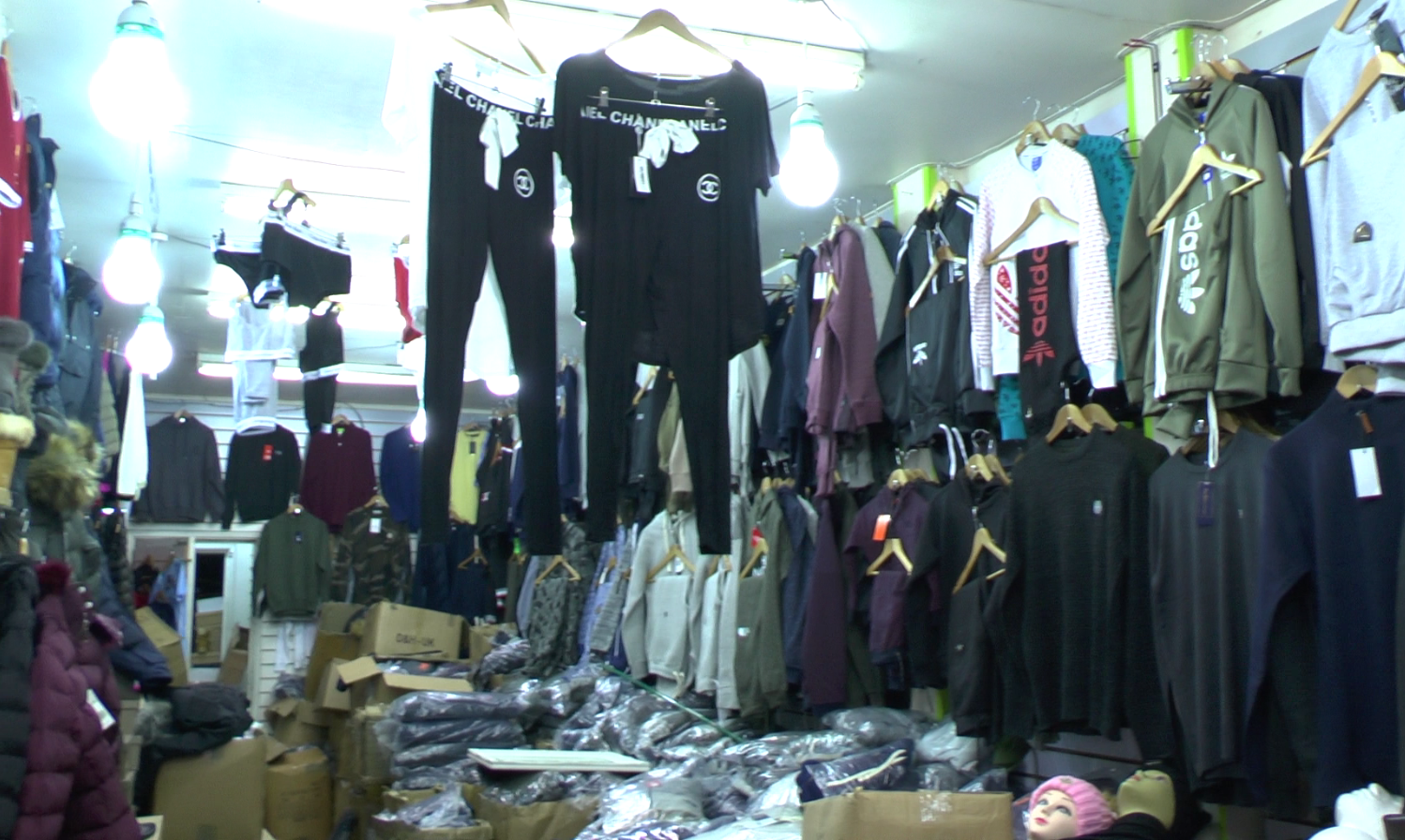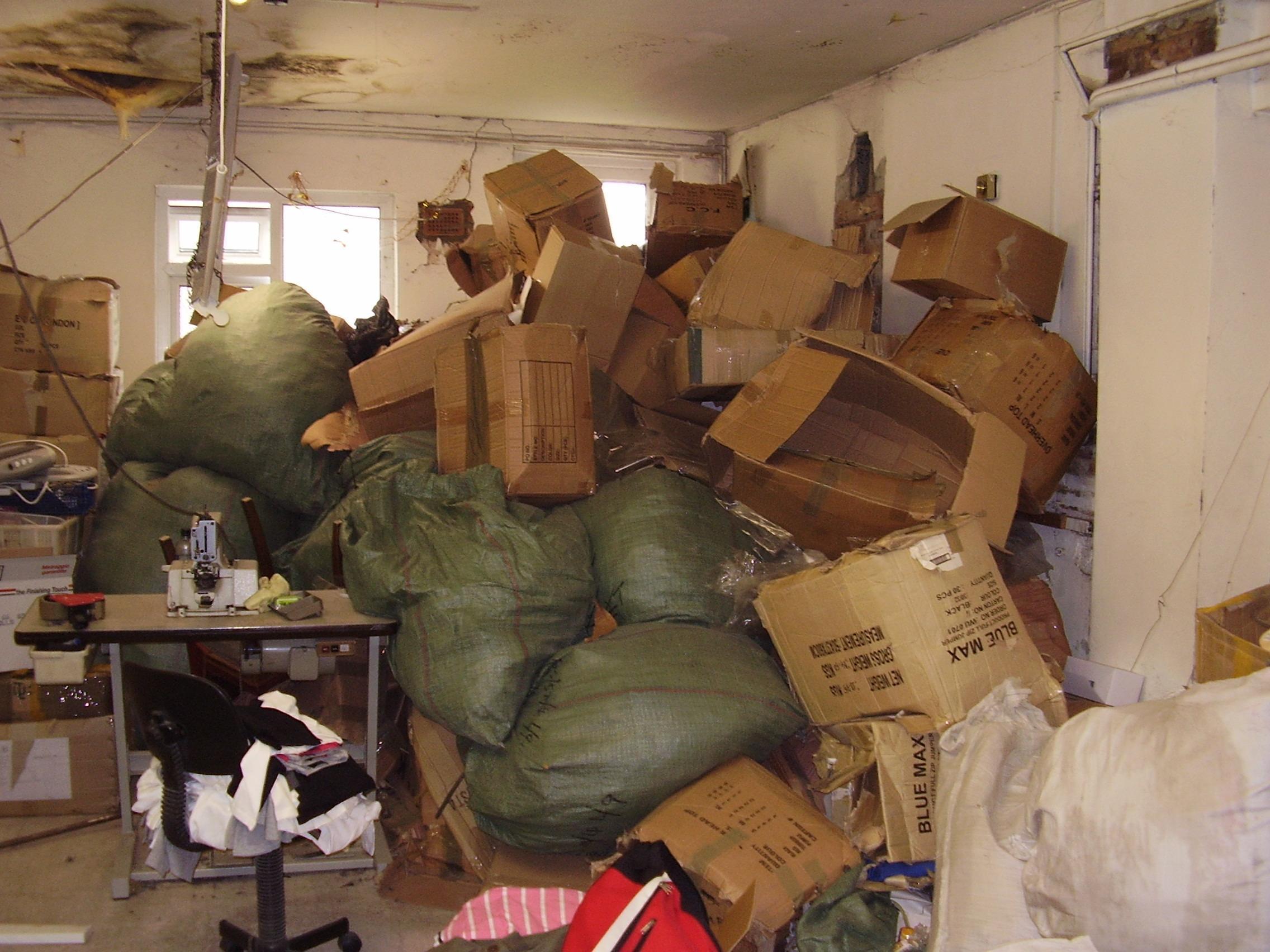'Counterfeit Street': The trail of misery behind the designer knock-off you are getting for Christmas
How buying fake designer goods can help modern slavery and gangsters whose other activities involve ‘a pump action shotgun, dum-dum bullets and amphetamines’

Some call it “Counterfeit Street”, others “the fakes capital of the UK”.
In a cluster of back alleys off Bury New Road, in the shadow of Manchester’s Strangeways prison, legitimate businesses struggle to exist alongside shops where knock-off Louis Vuitton costs £23, where you can buy a fake Mulberry handbag for £18, not £795, and much, much more besides.
Here, in probably the biggest hub of the UK’s multibillion-pound fakes trade, the story goes that one undercover investigator was told: “Give me 24 hours and I can get you anything you want.”
In a more sophisticated version of the “loveable” ‘Del Boy’ type shutting his suitcase and scarpering the moment he sees Old Bill, a network of spotters use burner phones to tell everyone the cops are coming, and key fobs to bring shop shutters down at the touch of a button.
The customers never complain when as a result they are shut inside shops for hours until the law has left the area. In fact, those who have worked this patch for a while recall raids where passers-by have gathered round the police and demanded: “Why are you bothering them? What harm are they doing?”
One possible answer came during a raid on 11 shops on 12 December, conducted by police, trading standards, HMRC and – perhaps tellingly – the Immigration Service.
Three shipping containers were filled with seized fake clothing, handbags, trainers, perfumes and jewellery, with a total value in excess of £3m.
But perhaps the most significant find was in a small upstairs back room Here were thousands of designer labels, and a machine for attaching them to goods that would be transformed from “blank” to “brand”.
It was a sign that perhaps fakes were being made abroad, imported without any branding to get them past Customs officers looking for counterfeits, and then taken to Manchester to be finished with the all-important designer labels – in conditions that, the investigators feared, might sometimes recall a developing world sweatshop.
No one was found beside the finishing machine – the Strangeways shops, often connected to each other by back stair and passageways, can resemble a rabbit warren with dozens of escape routes.
But elsewhere in Britain, people have been found doing the finishing.

One Leicester trading standards officer told The Independent of entering a cluttered, fire risk of a workshop where, under a mouldy ceiling, he found three frightened undocumented immigrants sewing Henry Lloyd, Adidas and Ralph Lauren logos onto about 6,000 polo shirts.
They were, he discovered, being paid 70p a day – and were too terrified to say who was putting them to work.
This, the investigators now fear, may also be the true face of the Strangeways and the UK’s fakes trade.
In the past six months, police have seen immigrants from such war-torn countries as Libya, Iraq and Afghanistan finding work in the Strangeways area, while being told of people getting paid just £20-£30 a day.
What exactly did some spotters mean when they said in interview that if they didn’t get the shutters down quickly enough, they would “get into a huge amount of trouble”?
Why were two large knives also discovered in the 12 December raid?
When one spotter, in his thirites from Iraq, guardedly revealed recently that he was working to “pay off debts”, was he talking about money owed to people who trafficked him here to work in the fakes trade? It seems that remains a possibility.
“There is a recognition that actually there is something darker happening here than simply the crime of people selling knock-off goods,” admitted one official involved in the Strangeways investigations.
“What we are starting to hear, about arrangements for people working here, how little they are paid, if they are paid at all … There are modern slavery concerns.”
“We have a lot of work to do to understand things more,” the official added, “But I can’t see how people working in these types of conditions could possibly be happy about them.”
It is a concern with which Detective Sergeant Kevin Ives of The Police Intellectual Property Crime Unit (PIPCU), run by City of London Police, is increasingly familiar.
“This is not a victimless crime,” he says. “When you are sitting there on Christmas Day feeling pleased with the fake item that has been bought on the cheap, you may have caused a lot of people a lot of misery.
“Behind each counterfeit item, there is potentially a string of victims.”
The fakes trade may have persisted in the public mind as something conducted by a loveable rogue flogging hooky gear down the market.
But investigators – none of them employed by the big brands - have told The Independent how Del Boy can sometimes be at the end of a chain involving “Dickensian” exploitation and organised criminals, who work with “a pump-action shotgun, dum-dum bullets and amphetamines”.
“The reality,” says Huw Watkins, a former senior police detective who is now the head of intelligence at the Government’s Intellectual Property Office (IPO), “is that selling fake goods cuts across a huge number of other crime types – and that includes violence, drug dealing and modern slavery.”
More often than not the trail of victims begins in China. The country has come to be regarded as the global hub for manufacturing counterfeits.
In September, the IPO reported that 80 per cent of all fakes seized at EU borders were being imported from China.
And while the big brands have not always covered themselves in glory when it comes to their supply chains, there are no accountability checks at all on the conditions in which fakes are made.
The author Dana Thomas has described joining a police raid on a tenement in Guangdong Province, one of the epicentres of fakes production, to find “two dozen sad, tired, dirty children, ages eight to 14, making fake Dunhill, Versace, and Hugo Boss handbags on old, rusty sewing machines”.
One British investigator, a regular visitor to China, described the counterfeiting work as being done mainly by women, sometimes by children, in workshops that were “Dickensian: dark, dirty – and thanks to all the exposed wiring, potentially lethal”.
These are the operations that British fakes traders import from.
Thanks to the internet they can now connect not just to manufacturers and online sellers, but also to English-speaking buying and shipping agents who advertise their ability to send through “sensitive lines” where “the probability of being [checked by Customs] is very low”.
As one investigator grudgingly admits: “I have been absolutely amazed by the business agility of some of these criminals. They are so flexible it makes you wonder why on earth they need to turn to crime.”
A surprisingly large number of fakes find their way to the Strangeways area. As an IPO report made clear last year, fakes traders from all over the country will get stock from here, sometimes buying online, sometimes travelling to Manchester to bulk buy in person.
The Independent has even been told of counterfeit goods going from Strangeways to be sold in other European countries like Spain.
Someone, somewhere is making a lot of money. In the run-up to Christmas, each of the 40 or so shops suspected of selling fakes on Counterfeit Street will be making thousands of pounds a day. In a raid earlier this year, £260,000 was found in cash – in a single shop.
Scale this up to similar operations all over the country, and you are looking at imports of fakes into the UK that are now thought by the OECD to account for as much as £9.3bn a year.
And it’s pretty clear that there is a high degree of organisation involved.
“A lot of shops are selling very similar stock at very similar prices,” said the Manchester official. “There has got to be organisation behind that, people higher up the chain.”
But of course the footsoldiers never inform on the generals: “Quite often, the interviews are ‘no comment’ all the way through.”
As well as the question of who they are, there is the issue of what else these organised criminals are up to.
“When people are involved in breaking the law in one area,” says the Manchester official, “they tend to break it in more than one area.”
This was illustrated by Welsh gangster Bernard Davies, (aka Bernie Arms, on account of his bulging muscles), when he was caught as he prepared for Christmas some years ago.
One investigator said boxes of fake trainers were found at Bernie’s Cwmaman home, and police interrupted the man himself as he wrapped ounces of cannabis in Christmas paper for his customers.
“Other aspects of his operation,” said the investigator, “involved a pump action shotgun, dum-dum bullets, and amphetamines.”
An IPO survey has revealed that in the year to May 2017, 27 per cent of UK trading standards authorities had found links between the fakes trade and organised criminal groups.
Nearly one in four (24 per cent) had observed links with drug dealing, 7 per cent with loan sharking. Nor was the Strangeways area the only place to report anxieties about modern slavery.
A total of eight UK trading standards authorities said that in the past year they had observed links between the fakes trade and modern slavery or people trafficking.
And on the most worrying fringe of this business, 3 per cent of UK trading standards authorities observed links between people committing counterfeit goods crime and child sexual exploitation.
All this activity, says Det Sgt Ives of PIPCU, is adding to the harm that selling fakes does in its own right.
“Frankly,” he says, “the crime of selling counterfeit goods can sometimes be bad enough. The people selling fake hair straighteners know that they don’t have temperature controls.
“So when you give somebody a counterfeit hair straightener for Christmas, if you don’t unplug it, it will heat up and heat up until it burns your hair – or burns your house down.”
It’s not hard to find other such stories. Raccoon dogs have been skinned alive in China for fake versions of the humanely sourced sheepskin found in Ugg boots.
And even a seemingly harmless pair of fake flip-flops have been known to cause harm to the wearer, when made by particularly cynical counterfeiters.
“The burn marks across this person’s feet were horrendous,” explained one investigator, “because the rubber had been made out of recycled materials – including used condoms.
“It was a toxic mix, and as soon as the wearer started to perspire, it reacted with their sweat.”
There are, it should be said, successes in the fight against counterfeiting.
Kevin Ives talks with satisfaction of receiving “pleading emails from Far East counterfeiters asking us to stop taking down their websites, or messages from them pretending to be other law enforcement and ordering us to stop.”
But as every investigator acknowledges, those Far East counterfeiters would never be in business in the first place were it not for the huge – and continuing - demand in the West.
“The public’s attitude,” admits one, “seems to range from ‘oh God, it’s fake, I’ve been ripped off,’ to ‘I know what I am buying, I don’t care and I’m going to carry on buying anyway.’”
The latter stance was enthusiastically espoused by one Western blogger who offers advice on how to buy fakes.
“You could consider it counter-culture,” he wrote. “Challenging the establishment, or poking fun at the industry.”
Or, says Huw Watkins of the IPO, you could consider the reality.
“The fact is, the criminals who engage in this activity don’t care for the rule of law. And they certainly don’t care if they exploit individuals in the way they do business.”
